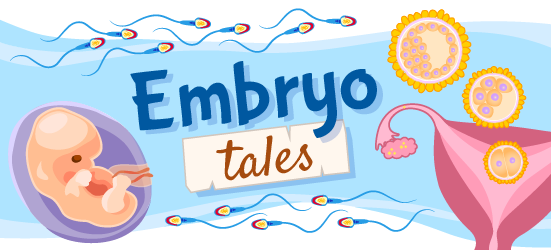
Gender Versus Biological Sex: What’s the Difference?
Illustrated by: Sabine Deviche

It’s a gender reveal party, and everyone in the room starts counting down, “3… 2… 1!” The expecting mother cuts into white icing, revealing a blue cake under it. She shouts, “It’s a boy!”
The people around you excitedly begin to say things like “He’s going to be a handful!” or “He’s going to be a great baseball player!” But the baby hasn’t even been born yet. All we know about it is what body parts it will likely have.
Is it fair to place expectations on that baby already? What if they don’t want to play baseball or act tough when they get older? What if they don’t even feel like a boy at all?
People assume a lot about what a person will be like based on their biological sex. Those assumptions make up a large part of what we call gender. Most people are assigned a gender of girl or boy when they are born. As they grow, they are taught to behave according to the expectations of that gender, as defined by their society. Many people are comfortable with the roles of the gender they are assigned. But many others are not. They may not fit neatly as a woman or a man.
Biological Sex vs. Gender
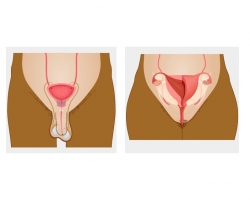
Biological sex classifies humans based on things some bodies have in common. Humans are usually assigned as female or male at birth based on their body parts and sex chromosomes.
People can have two kinds of sex chromosomes: X and Y. Females tend to have two X chromosomes while males tend to have an X and a Y chromosome. A person's chromosomes influence what body parts they have. Females often have breasts and vaginas. Males often have penises. Some people are born with a combination of male and female body parts, though. People like that are called intersex.
But our gender isn’t about our bodies. It’s more about how we feel, look, and act. For example, you may have grown up with the idea that women have to be polite and wear makeup or that men have to be bold and muscular. But those aren’t based in science.
The Roots of Gender Roles
Gender is constructed by our societies. This means that humans invented all of our ideas about what it means to be a woman, man, or other gender. Humans continue to spread these ideas over time. These ideas are so commonplace in our societies that we grow up thinking they are true. We often learn to act according to the gender roles we are assigned as we grow up in our particular society. Other societies might understand gender roles in other ways, though. So, a person from another culture or place may learn completely different ways to act "in line" with their gender.
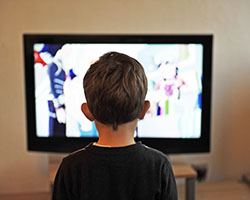
Wait, learn? You might not remember being taught these ideas at all.
That’s because we learn about gender without realizing it. We learn about gender kind of like we learn language. When you were born, you didn’t know a single word. Now, all these years later, you know a whole language and use it every day.
How did you learn all these words?
Your parents might have taught you a lot of words growing up, but you also probably learned them from the world around you in school, on TV, from friends, or in books.
Similarly, we learn what it means to be a woman or man from the world around us. Your parents may have taught you some of these ideas, but you also learned them from the characters on TV shows and from talking with friends.
Unrealistic Expectations
Expectations of gender often don’t exactly match how we act. Traditionally, it wouldn't be as expected for girls to love building or playing with trucks, and for boys to like fashion and playing with dolls. But these preferences are common (and are becoming more common as we accept such preferences). Most people understand that gender roles are just social ideas. But when people deviate too far from the expectations of their gender, sometimes there are consequences because of other people.

Have you ever heard someone criticize a man for being “too girly” or a woman for being “too manly?” Those are examples of the ways we constrain other people’s freedom to behave as they want to based on our expectations of their gender.
Gender expectations especially hurt people who don’t feel like the gender they were assigned at birth is true to who they are. Gender diverse people identify as a gender other than the one they were assigned at birth. A different gender reflects how they feel most comfortable. Some may even identify with no gender or multiple genders at once.
Sadly, many people are intolerant of people whose gender differs from what was assigned to them at birth. Gender-diverse people have to deal with a lot of discrimination and violence. And that only happens because other people don't accept how they express their gender.
Generating Ideas About Gender
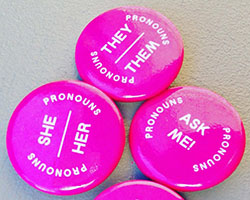
Humans have known about differences between the biological sexes for a long time. The word “gender” has also been used for many years, but it used to mean the same thing as biological sex.
One of the first people to use “gender” to talk about something separate from sex was John Money. Money was a psychologist who studied sexual identities in the US and New Zealand. A lot of Money’s work remains controversial. But in 1955, Money introduced the idea of gender roles for the first time.
In 1964, the psychologists Robert Stoller and Ralph Greenson built off of Money’s ideas. They were some of the first to use the term "gender identities." Unlike gender roles, which have to do with how a person behaves, gender identities were about how a person feels. A person’s gender identity has to do with what gender they understand themselves as.
Feminist Framing
In the 1960s and 1970s, feminists started using the idea of gender to argue for equality. Two such feminists were Ann Oakley, a British social scientist, and Jessie Bernard, a writer in the US. They used Money, Stoller, and Greenson’s ideas of gender to advocate for equality between men and women.
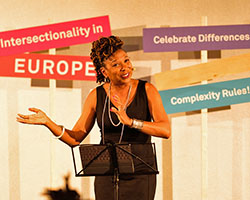
By the 1980s, feminists like Kimberlé Crenshaw and Judith Butler argued that men and women aren’t actually very different from each other. Men and women are not born different, they argued, but they learn to be.
On the other hand, some feminists like Carol Gilligan, a psychologist in the US at the time, disagreed. Gilligan said that men and women are still different from one another. She believed those differences carried over into gender.
Scientists have shown that there are biological differences in people based on their sex. Yet, those do not dictate gender.
Gender as a Choice
Today, LGBTQ+ scholars like Alex Iantaffi and Meg John Barker have led the way to discussing gender as a spectrum in the US mainland.
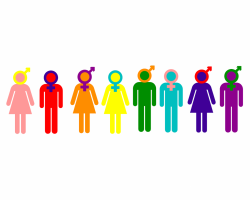
In the 2010s, Iantaffi and Barker began writing about gender identities beyond just men and women. Modern activists like them see gender as a spectrum of identities people can choose from.
LGBTQ+ communities have created many new ways to talk about gender identity. Those have helped many people better define themselves. However, many people around the world are not able to safely express their genders. That's because many people remain intolerant to people who change genders.
Hopefully, by following the lead of LGBTQ+ activists, we can work toward a safer world. All people deserve safety and acceptance.
Image of Frida Kahlo painting by Mike Steele via Flickr.
This Embryo Tale was edited by Cole Nicols and is based on the following Embryo Project articles:
Drago, M. (2014, April 9). Hermaphrodites and the Medical Invention of Sex (1998), by Alice Domurat Dreger. Embryo Project Encyclopedia. ISSN: 1940-5030 http://embryo.asu.edu/handle/10776/7818.
Gaetano, P. (2017, November 15). David Reimer and John Money Gender Reassignment Controversy: The John/Joan Case. Embryo Project Encyclopedia. ISSN: 1940-5030 http://embryo.asu.edu/handle/10776/13009.
Schnebly, R.A. (2022, June 13). Biological Sex and Gender in the United States. Embryo Project Encyclopedia. ISSN: 1940-5030 http://embryo.asu.edu/handle/10776/13338.
Read more about: Gender Versus Biological Sex: What’s the Difference?
Bibliographic details:
- Article: Gender Versus Biological Sex: What’s the Difference?
- Author(s): Risa Aria Schnebly
- Publisher: Arizona State University School of Life Sciences Ask A Biologist
- Site name: ASU - Ask A Biologist
- Date published: 11 Sep, 2023
- Date accessed:
- Link: https://askabiologist.asu.edu/embryo-tales/gender-and-sex
APA Style
Risa Aria Schnebly. (Mon, 09/11/2023 - 12:45). Gender Versus Biological Sex: What’s the Difference?. ASU - Ask A Biologist. Retrieved from https://askabiologist.asu.edu/embryo-tales/gender-and-sex
Chicago Manual of Style
Risa Aria Schnebly. "Gender Versus Biological Sex: What’s the Difference?". ASU - Ask A Biologist. 11 Sep 2023. https://askabiologist.asu.edu/embryo-tales/gender-and-sex
Risa Aria Schnebly. "Gender Versus Biological Sex: What’s the Difference?". ASU - Ask A Biologist. 11 Sep 2023. ASU - Ask A Biologist, Web. https://askabiologist.asu.edu/embryo-tales/gender-and-sex
MLA 2017 Style

Frida Kahlo was a Mexican painter who often defied gender stereotypes in her art. In this painting from 1940, "Self Portrait with Cropped Hair," Kahlo depicts herself wearing a traditionally masculine suit. Many artists have taken inspiration from Kahlo to defy gender norms in their art.
Be Part of
Ask A Biologist
By volunteering, or simply sending us feedback on the site. Scientists, teachers, writers, illustrators, and translators are all important to the program. If you are interested in helping with the website we have a Volunteers page to get the process started.
